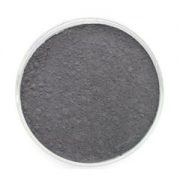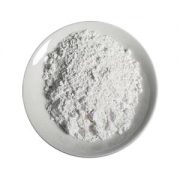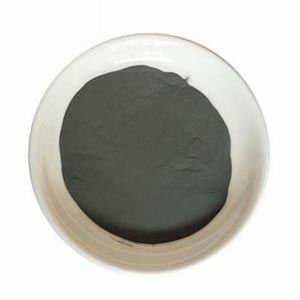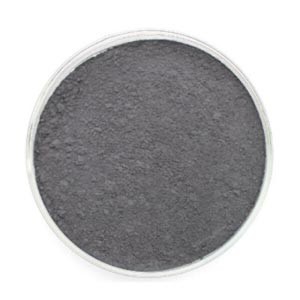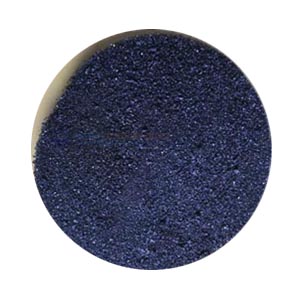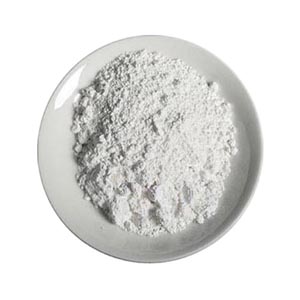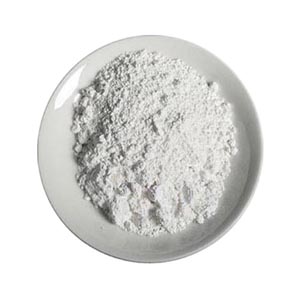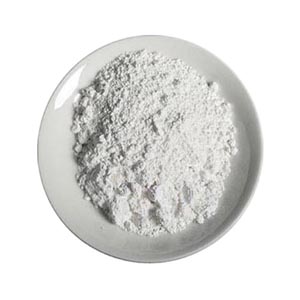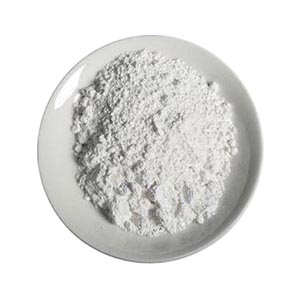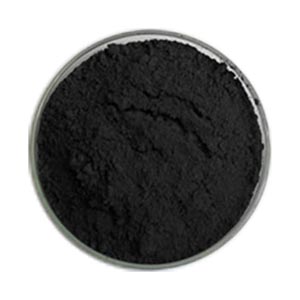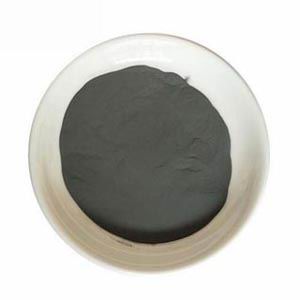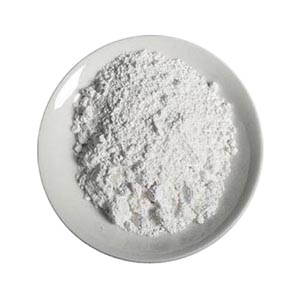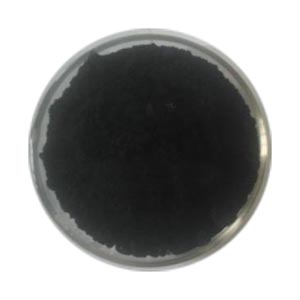
Molybdenum pentachloride
Specification: 99%-99.99%
English alias: Molybdenum (V) chloride; Molybdenumchlorideanhydrous; Molybdenum (V) chloride
CAS number: 10241-05-1
Molecular formula: MoCl5
Molecular weight: 273.205
Melting point: 194°C
- 描述
- Related Information
- Inquiry
property: MoC15 appearance, with it’s physical condition and are solid, liquid and gas are black crystal, black and amber amber liquid and steam. Molecular weight is 273.2, melting point is 194 ℃, boiling point is 268 ℃, 25 ℃ when the density is 2.928 g/cm3. Electrical properties: 25 ℃ is an insulator, 216 ℃ for 1.9 x 10-6 Ω, 258 ℃ for 7.5 x 10-6 Ω.
MoC15 is a volatile and volatile crystal, which is highly pure refractory metal halide. It has chemical effect in the gaseous and liquid phase, the medium temperature is volatile, the gas is easy to decompose into metal molybdenum deposit, easy to dissolve in organic solvents, these characteristics are beneficial to its practical application.
USES: used as chloride catalyst, refractory resin composition, six carbonyl molybdenum, was used to prepare metallic organic compounds.
The effect on the environment:
Health Hazards
Inhalation: inhalation, ingestion.
Health hazards: This product is irritating to eyes, skin, mucous membranes and upper respiratory tract.
Toxicological information and environmental behavior
Hazardous characteristics: Reacts violently with water and emits approximately white smoke toxic and corrosive hydrogen chloride gas. Moisture can corrode metals.
Combustion (decomposition) product: Hydrogen chloride.
On-site emergency monitoring methods, laboratory monitoring methods: atomic absorption spectrometry; plasma spectroscopy
Environmental standards: China (TJ36-79) workshop harmful substances in the air that the maximum allowable concentration 4mg / m3 (by Mo dollars)
Leakage emergency treatment
Isolated from contaminated areas, restricted access. Recommended emergency personnel wearing self-contained breathing apparatus, wear anti-acid coveralls. Do not touch the spill directly. Small spill: Collect with a clean shovel in a dry, clean, covered container. You can also use a lot of water rinse, diluted water into the waste water system. Large amount of leakage, collection and recycling or disposal after disposal.
Protective measures
Respiratory protection: In the event of possible contact with dust, a self-priming filtered respirator must be worn. If necessary, wear self-contained breathing apparatus.
Eye protection: Wear safety glasses.
Protective clothing: Wear plastic protective clothing.
Hand protection: Wear rubber gloves.
Other: Worksite no smoking, eating and drinking. Work done, shower dressing.
first-aid
Skin contact: Remove contaminated clothing, rinse skin thoroughly with soap and water.
Eye contact: lift the eyelid, rinse with running water or saline. Medical treatment.
Inhalation: quickly from the scene to the fresh air. Keep the airway open. If breathing is difficult, give oxygen. Such as breathing to stop, immediately artificial respiration. Medical treatment.
Ingestion: drink enough warm water, vomiting, medical treatment.
Fire fighting methods: Firefighters must wear full body acid and alkali fire service. Extinguishing agents: carbon dioxide, sand.
相关产品
-
Tungsten silicide
Other name: Tungsten disilicide
CAS no. : 12039-88-2
EINECS no. : 234-909-0
Formula: Si2W.
Molecular weight: 240.011
Density: 9.40 g/cm3
Melting point: 2165 C.
-
Molybdenum disilicide
Other name: Molybdenum silicide
Molecular formula: MoSi2
CAS number: 12136-78-6
Molecular weight: 152.11
Melting point: 2030 ° C
Density: 6.24g/cm3 -
Tungsten hexachloride
English alias: Tungsten (VI) chloride; Tungstenchloride; Tungsten (6 +) hexachloride; Tungsten (4 +) tetrachloride; Tungsten chloride
CAS no. : 13283-01-7
EINECS no. : 236-293-9
Molecular formula: Cl6W
Molecular weight: 396.558
Melting point: 275 ℃
-
Niobium metaphosphate
English name: Niobium metaphosphate
Chemical formula: Nb (PO3) 5
Molecular weight: 487.90
Properties: sodium biphosphate glass, white powder, insoluble in water, PH value: 3.8
-
Zirconium acetylacetonate
Other name: Zirconium-2,4-pentanedionate, Zirconium(IV)acetylacetonate; Tetrakis(acetylacetonato)zirconium(IV); 2,4-pentanedione,zrderiv.; acetyl-zirconiuacetonate; nasemuzirconium; orgatixzc150; pentane-2,4-dione-zirconium (4:1);
CAS no. : 17501-44-9
EINECS no. : 241-241-5
Molecular formula: C20H28 Zr O8
Molecular weight: 487.6555.
Melting point: 171-173℃
-
Tantalum pentachloride
Other name: Tantalic Chloride, Tantalum(V) chloride, Tantalumchlorideanhydrous
CAS no. : 7721-01-9
EINECS no. : 231-755-6
Molecular formula: Cl5Ta
Molecular weight: 358.2145
Melting point: 221-235 ℃
Relative density :3.682
-
Ammonium niobium oxalate
English alias: Ethanedioic acid ammonium niobium (5 +) salt , Ammonium niobate (v) oxalate hydrate
CAS no. : 168547-43-1
Molecular formula: C4H4NNbO9
Molecular weight: 302.98 g / mol
-
Titanium black Ti4O7
Blue Black electrically conductive powder
Produced by proprietary process
High Ti407 Content
Structurally Stabilized Sheer Planes
High Resistance to oxidation and corrosion
in acid and base solutionsStabilized Magneli Phase Titanium Oxide
Electrically Conductive Ceramic PowderD50 particle size: 80nm, 20um
-
Tantalum diboride
Other name: tantalum boride (1:2)
CAS no. : 12007-35-1
EINECS no. : 234-234-5
Molecular formula: B2Ta.
Molecular weight: 202.572
-
Ammonium vanadate
Other name: Ammoniummetavanadate;Ammonium Vanadate(V); ammonium trioxovanadate; hydroxy(dioxo)vanadium ammoniate (1:1); ammonium oxido(dioxo)vanadium
CAS no. : 7803-55-6
EINECS no. : 232-261-3
Molecular formula: NH4VO3
Molecular weight: 116.9776
Melting point: 200 ℃
Solubility in water: 5.1 g/L (20 ℃)
PSA:57.20000
LogP:0.01980

